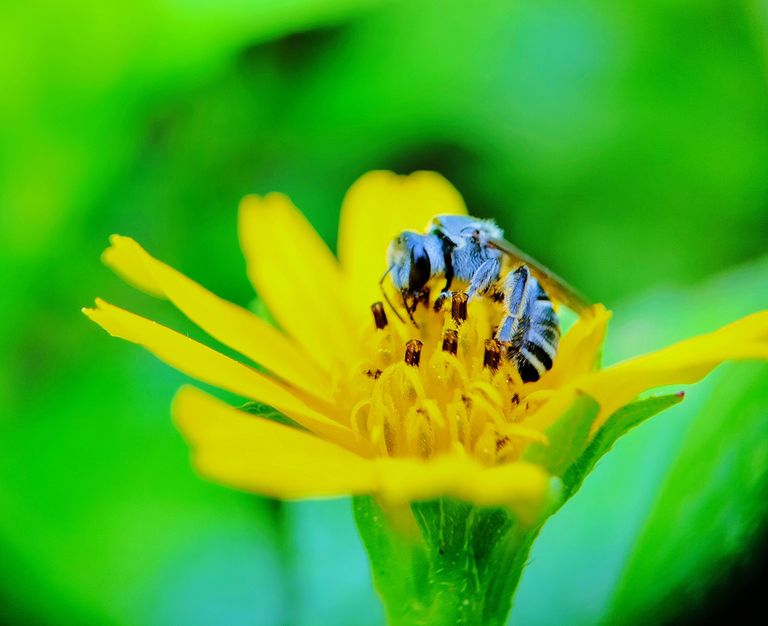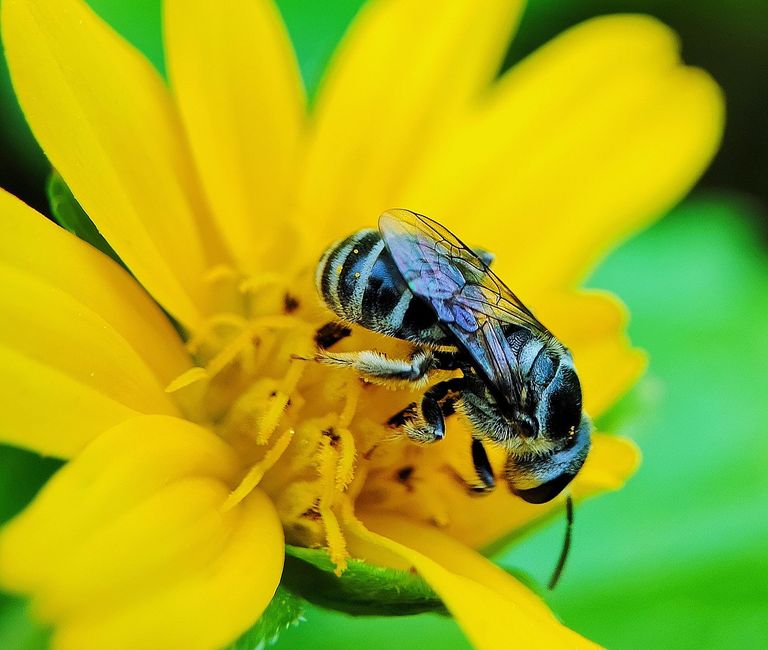


Inside the flower petals that are assisted by insect pollination (such as by bees and butterflies), there is nectar or pollen in the flower. This nectar is very sweet and rich in sugar. This nectar is a mixture of various sugars such as glucose, fructose and sucrose. The nectar is used to attract insects that will come to the flowers. When insects drink the nectar in flowers that makes pollen stick to the insect's body. This pollen will then be carried to other flowers and fall to the flower's pistil. Thus, insects such as bees will help pollinate the flower. Plants can pollinate by becoming farther away, because they are assisted by these insects. This creates a mutually beneficial relationship, where the bees get food from the nectar of flowers, while the pollination of flowers is helped by the activity of the bee birds. In plants that are aided by wind, the flowers are simpler and lack nectar. On the other hand, these flowers have an open structure and large amounts of pollen so that the wind can spread them easily. Bees have a unique ultraviolet vision to see patterns of flowers that cannot be seen with the human eye. Bees have coarse hair to collect large baskets of pollen. Bees also have a special long tongue for sucking nectar, so there is a symbiosis of mutualism. So, both of them benefit in this relationshipsource.